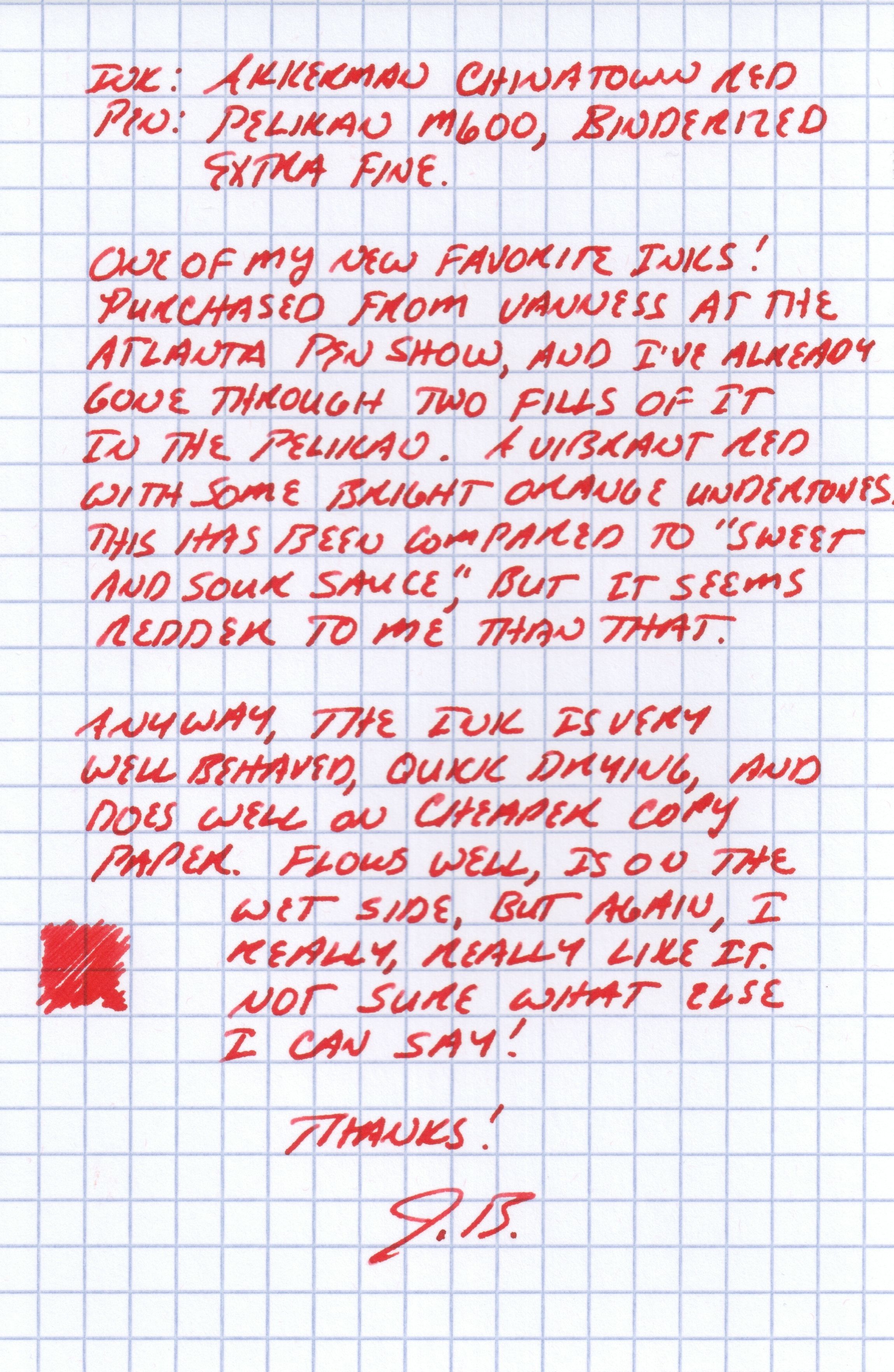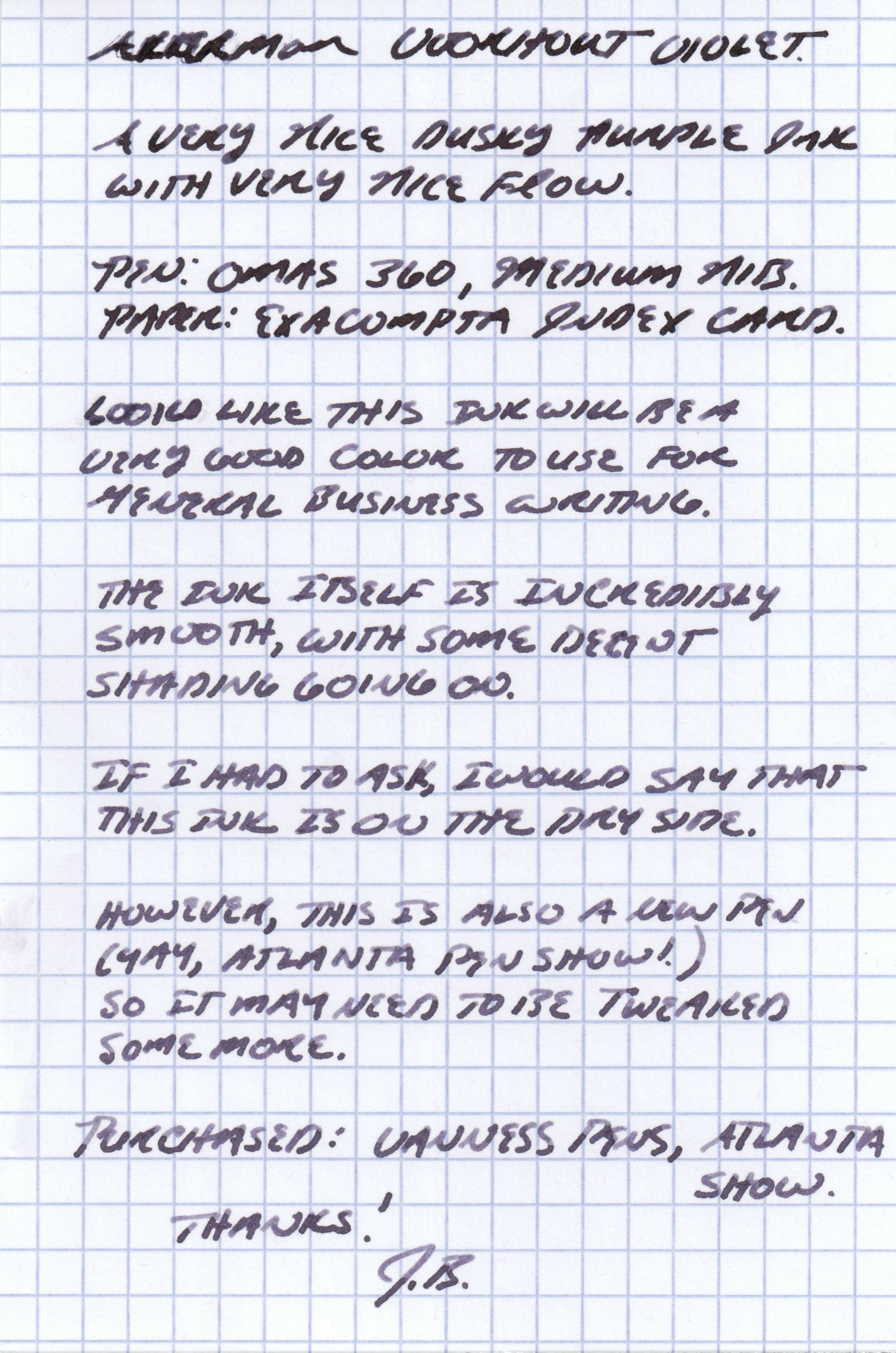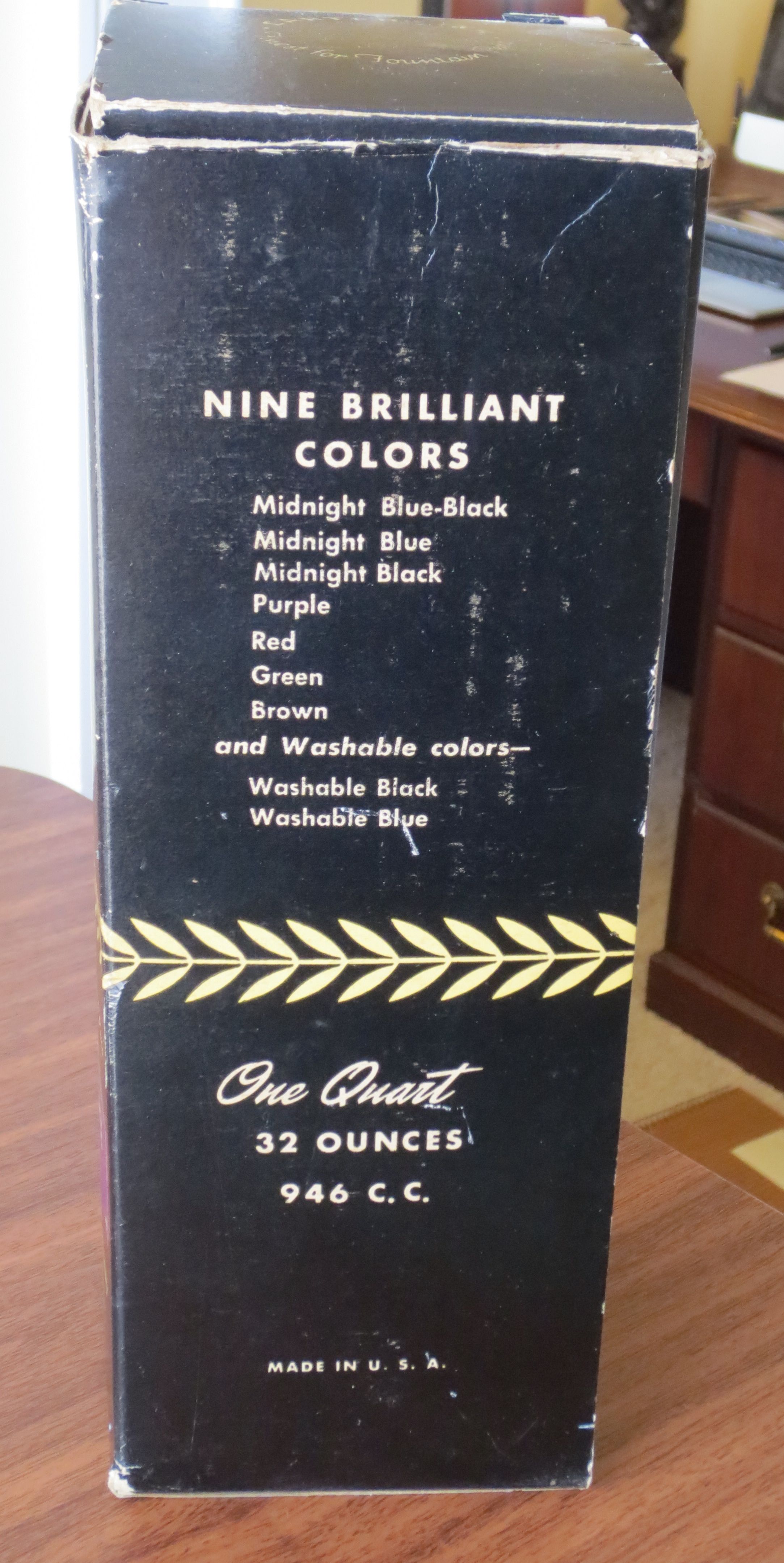My first stop at last weekend's Atlanta Pen Show was the Vanness Pens table. I drove down from Nashville for the day, pretty much worrying the whole way that Vanness would be sold out of Akkerman by the time I arrived. I shouldn't have worried! Lisa and Wendi brought 75 bottles, which I think covered the full spectrum of colors, and while I hear the ink went fast, there was plenty of it left on Saturday morning when I got there. Chinatown Red and Voorhout Violet were the two colors I had come for, so I snapped them up and took them out to my car for safekeeping. And, of course, when I got back to the hotel that night, they were the first two that I inked up.
These are the "baby Akkermans," (60ml), not the 150ml bottles. The large bottles have been discontinued.
Which ink to review first? The Voorhout violet is definitely the most interesting of the two, at least to me. I love dark purple inks, and have been looking for a purplish black that I can use professionally on a daily basis. I have Pharmacist's Purpura Imperialis, which is nice, but the IG formulation is a little too high maintenance for my routine use. This ink, on the other hand, is nearly perfect for work. Even in a wet pen, it's well-behaved on cheap paper, does not feather or bleed through, and dries quickly. I would say the ink itself is slightly "dry." There's great shading, as you can see in the gallery photos below.
Akkerman Voorhout Violet exhibits some nice shading properties. Written on an Exacompta Index Card.
The Chinatown Red is very different. It's much more saturated, does not shade as much, and is a "wetter" ink. Even though the Chinatown Red flows more freely, it is still well-behaved and does not bleed through or feather too much on copy paper. The scan below does a fairly decent job of capturing the color. It's a bright red with orange undertones. I spent all of last week editing a 75-page report and went through two fills of this color in my Pelikan M600 EF.


Both of these inks will make it into my general rotation. I always have one or more shades of red (my preferred color), and the voorhout violet is dark enough to make it into my family of "business inks." Now that I have my two desired Akkerman colors, I can lay off the ink purchases for a while!



